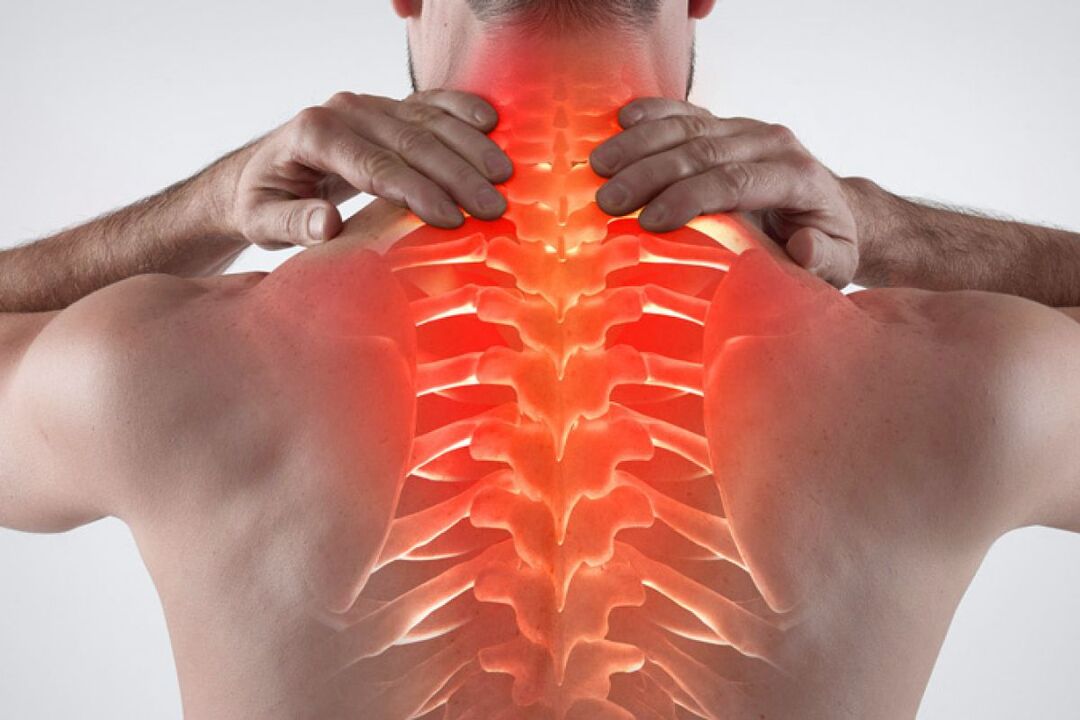Dystrophic as well as degenerative processes that occur in the human spinal column usually lead to diseases such as osteochondrosis. This pathology can affect one segment of the ridge, or the entire spine. Some parts of the spine are injured more often, some less often.

The vertebrae in the thoracic spine differ in strength, they are larger than others. In addition, there is less mobility in this section of the ridge, it is less stressed and the muscles are perfectly supported by the skeleton.
Defeat of osteochondrosis in the chest is diagnosed much more rarely. This pathology usually presents with symptoms similar to those of many diseases and is classified by degree according to the degree of destruction of the intervertebral discs.
Grade I osteochondrosis of the chest region: symptoms
In patients with early-stage osteochondrosis of the chest, there is a decrease in the elasticity of the discs between the vertebrae of the ridge. Possible protrusion of the fibrous ring.
The following symptoms may appear in the initial stage of the disease:
- The patient suffers from sharp penetrating pain. This happens after physical activity, exercise or lifting heavy objects. The pain is painful, constant, non-intense, accompanied by lumbago;
- High loading results in sudden rupture and cracking of the capsule in the intervertebral disc. As a result, the nucleus penetrates the cracks, irritating the nerves of the spinal column;
- This degree of disease is accompanied by pronounced muscle tension. As a result, the space in the intervertebral discs becomes narrower and the pain intensifies.
Chest osteochondrosis can develop with pain in the heart area, digestive organs, kidneys. At this stage of the disease the signs disappear and it is difficult to diagnose.
Treatment of grade 1 thoracic spine osteochondrosis
Early stage osteochondrosis of the chest is easier to treat. Treatment of the disease aims to eliminate the manifestations of the disease and heal the capsule rupture.
Since inflammatory processes take place in the tissues, causing severe pain, treatment is started using painkillers or injections in the form of painkillers.
To relieve spasms and increase blood flow to the damaged area of the spinal column, medications are prescribed to help the vessels dilate. Daily intravenous administration of sodium chloride will promote swelling. The duration of such therapy is 5 days.
In addition, chondroprotectors are prescribed for treatment. These drugs act on the damaged areas and help to repair the tissues.
Doctors often prescribe nonsteroidal anti-inflammatory drugs to stop the inflammation. However, it should be borne in mind that taking these medications can worsen the course of pre-existing chronic diseases, especially pathologies of the gastrointestinal tract. For this reason, the duration of taking nonsteroidal anti-inflammatory drugs should not exceed 10 days.
All medications should be prescribed only by a physician. To get positive results, the patient must strictly follow all the recommendations of the doctor: dosage, time of taking the drug and duration of treatment.
All medications prescribed for treatment can be divided into:
- Antihistamines;
- Nonsteroidal anti-inflammatory drugs;
- Vasoactive agents.
The patient is recommended to follow a one-month bed rest, it is advisable to undergo physiotherapy procedures.
It is important to remove the ridge for preventive purposes. It is not necessary to go to the gym for this. A horizontal bar is always suitable for any sports field. It is recommended to hang it once a day for a few minutes. This procedure helps to remove stress from the intervertebral discs of all zones of the ridge.
Osteochondrosis of the thoracic spine 2 degrees: Symptoms
If the disease is not betrayed at an early stage and treatment is not started, then the disease progresses to the 2nd degree. With this pathology, there is a further decrease in the elasticity of the discs between the vertebrae, a hernia may form and narrowing of the intervertebral foramen is observed. The second stage of the disease is characterized by neurological syndrome, as well as painful sensations.
This stage of ridge disease is difficult to diagnose and is accompanied by signs similar to a heart attack, angina or pneumonia.
The following signs of grade 2 osteochondrosis of the chest should be noted:
- Persistent pain in the affected side;
- Arterial hypotension may be noted;
- Unnatural mobility of the ridge section occurs;
- Capsule thinning increases joint mobility;
- Scoliosis develops due to instability of the spine;
- The vessels of the spinal cord are gradually damaged.
With 2 degrees of chest osteochondrosis, the pain occurs:
- In the chest. Such pains intensify after a long stay in one posture;
- In the intervertebral zone of the spinal cord;
- Take a deep breath or exhale;
- When turning, as well as tilting the body, raising the arms above.
During this pathology, there is a feeling of compression in the chest area, as well as firmness.
Grade 2 disease can occur with intestinal pathologies, shortness of breath. The patient complains of skin peeling, headache, and pain in the heart area.
This pathology can last for years, alternating periods of exacerbation and remission.
Treatment of osteochondrosis of the 2nd degree chest region
The disease requires urgent complex treatment. Your doctor will prescribe anti-inflammatory drugs to relieve the pain. Manual therapy sessions as well as massage are prescribed for the effectiveness of therapy. These procedures improve the blood supply to the spine.
Timely therapy can significantly slow down the pathological processes of the spine, and in some cases completely stop the development of osteochondrosis.
Often osteochondrosis of the spine is mistaken for heart pathology or other disease. At the first manifestation it is necessary to consult a doctor for the differential diagnosis of osteochondrosis from different diseases and to appoint effective treatment.

















































